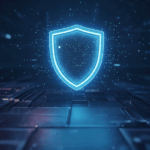Have you ever paused to consider how deeply cyber threats have woven themselves into the fabric of our daily lives? From seemingly harmless text messages to complex AI-driven attacks, the digital landscape of 2025 is more treacherous than ever.
As we entered in October, the Cybersecurity Awareness Month, let’s focus a few pressing questions:
- When was the last time you updated your passwords?
- Could your personal or work account be compromised via a subtle AI-powered phishing campaign?
- Does your organization treat cybersecurity as a continuous journey or a one-time “set and forget” checklist?
- Are you consulting with the best cybersecurity company in India to solidify security measures?
In 2025, these questions are urgent. The threat landscape has shifted dramatically, with new tools in the adversary’s arsenal and fresh vulnerabilities to guard.
Here, we will discuss the top “10 Things to Know” for Cybersecurity Awareness Month. What steps organizations should take to strengthen its cybersecurity systems.
1. Cyberattacks Are Escalating — But Budgets Aren’t Keeping Pace
Data from ET Edge Insights highlights that in recent years, the average number of weekly cyberattacks per organization has more than doubled—from about 818 in Q2 2021 to 1,984 in the same quarter of 2025.
ET Edge Insights Yet, paradoxically, overall cybersecurity budget growth is stalling—rising only ~4% this year compared to ~17% in 2022.
This disconnect is alarming. As threats intensify, underinvestment undermines resilience. Organizations must reconsider how they allocate funds and ensure that cybersecurity is baked into every strategic decision, not tacked on as an afterthought. If required, they can hire a top cybersecurity company in India for the betterment of their organizations.
2. The Double-Edged Sword: AI as Defender and Offender
While organizations increasingly adopt AI tools to detect anomalous behavior, threat actors are also harnessing generative AI for malicious ends.
Phishing campaigns are becoming eerily convincing, deepfake voice calls can impersonate trusted leaders, and finding zero-day vulnerabilities via automated systems is more accessible than ever. The same technology that helps defend our systems can, in the wrong hands, power devastating attacks.
The lesson? AI security tooling is necessary; but not sufficient. It must be complemented with human oversight, rigorous training, and red-teaming.
Recommended reading: Cybersecurity in India: Adapting to the Age of AI
3. Humans Remain the “Weak Link”—But It’s Getting Harder to Spot
Humans have always been the preferred target in cyberattacks—and that hasn’t changed. What has evolved is the sophistication of social engineering. Hackers are blending deepfake audio/video, impersonation, and AI-generated context to make attacks more convincing.
Consider the infamous case of Scattered Spider, an organization known for impersonating employees or contractors to gain access.
This underscores a vital point: cybersecurity is not solely the domain of your IT department. Every employee—from interns to leadership—must be alert, educated, and empowered. Hire a top cyber security company in India that will provide necessary training to your employees.
4. Deepfakes & Synthetic Media Are Now Core Tools
Deepfake attacks are no longer sci-fi scenarios—they are real and evolving. In 2025, we have seen cases where AI-generated video or voice clones of CEOs were used to coax finance teams into transferring tens of millions of dollars.
One incident involved criminals mimicking the voice of Ferrari’s CEO, nearly fooling multiple employees. AI-generated video of senior executives led to an unauthorized $25 million transfer.
Countermeasures must go beyond technology. Vigilance, verification protocols (e.g. callback authentication), and “trust but verify” cultural policies are essential in this era of synthetic deception.
5. Ransomware Hits Big Brands — And Recovery Is Not Cheap
Even large organizations with resources are vulnerable. For instance, the UK retail giant Marks & Spencer was forced to halt click-and-collect services for 15 weeks after a ransomware attack—a disruption that reportedly cost them $300 million in annual profits.
This demonstrates two truths: first, that ransomware is not a niche risk but a mainstream one; second, that recovery is not just about paying a ransom—downtime, reputational damage, remediation, and regulatory penalties all add up.
The best defense? Preparation in advance: reliable backups, incident response plans, segmentation, and regular drills. Consult with the best cybersecurity company in India in this aspect.
6. Governments Are Tightening Cyber Laws & Regulation
Regulators are catching up. In 2025, several high-impact legal frameworks have come into force or are on the brink, including:
- The Digital Operational Resilience Act (DORA) in the EU
- The Cyber Resilience Act
- The AI Act governing responsible use of artificial intelligence
National governments are also moving to reduce incentives for ransomware by banning public-sector ransom payments and tightening liability rules.
Organizations worldwide must monitor evolving regulation. Compliance is no longer optional—it’s integral to risk management and reputation.
7. States & Nations Are Embracing AI in Defensive Posture
Not only private firms: governments are investing heavily in AI-driven cyber defense. For example, OpenAI has partnered with the U.S. Department of Defense for advanced AI capabilities.
Tech firms like Microsoft are donating no-cost cybersecurity services to national governments. Meanwhile, telecom providers like Orange are forming new security units to support nation-scale resilience. Organizations are partnering with the best cybersecurity companies in India to strengthen defensive measures.
These shifts suggest that public-private collaboration in cyber defense is growing—and that attackers will increasingly face coordinated, AI-enhanced resistance.
8. Cybercrime Goes Global — Collaboration Is Essential
Recent investigations into attacks by groups like Scattered Spider underscore how cyber threats cross borders effortlessly.
A striking example: INTERPOL and AFRIPOL coordinated the dismantling of 25 cryptocurrency mining centers across 18 nations, yielding 1,200 arrests and $97 million recovered.
Such operations demonstrate that to counter cybercrime, nations must share intelligence, harmonize laws, build joint strike forces, and invest in cross-border cooperation.
9. The Cyber Talent Shortage Remains a Bottleneck
Despite the urgency, most organizations lack the skills to defend properly. Only 14% of firms report having the right cybersecurity talent in place.
Emerging economies are particularly hard hit. A proposed solution? Public-private partnerships (PPP)—governments, firms, universities joining hands to build talent pipelines.
In practice, giving training stipends, sponsoring bootcamps, and offering clear career pathways are becoming vital—because tools alone can’t compensate for human expertise.
10. Even Airports & Infrastructure Are Vulnerable
In late 2025, a cyberattack crippled check-in and baggage systems across major European airports including London Heathrow, Berlin, Dublin, and Brussels.
The target? A shared IT system that multiple airlines used. The fallout: delayed flights, chaos, and reputational damage for vendors, airports, and airlines alike.
This should remind us that cybersecurity is a shared responsibility across ecosystems—not just IT systems in silos, but infrastructure, service providers, third-party vendors, and regulators.
Bringing It All Together: Your Roadmap for Action
As we observe Cybersecurity Awareness Month in 2025, here’s a compact roadmap for individuals and organizations:
- Prioritize investments smartly. Increase budgets in high-impact areas (e.g. detection, response, training).
- Layer AI and human review. Don’t trust AI alone; blend tech with human oversight.
- Train for deception. Simulate phishing, deepfake attacks, and social engineering in realistic settings.
- Adopt zero-trust philosophies. Never assume internal traffic is safe.
- Plan for recovery. Backup data, run drills, and prepare incident response early.
- Stay regulatory-aware. Monitor and engage with cybersecurity legislation relevant to your region.
- Forge alliances. Join threat-sharing networks, partner with government programs, and leverage cross-industry cooperation.
- Build talent from within. Upskill existing staff via certificates, microcredentials, or rotations.
- Test third parties. Vet contractors and vendors for their security hygiene.
- Foster security culture. Make cybersecurity a mindset, not a checklist.
- Hire a professional company. Hire the best IT company in India that will take care of all your cybersecurity requirements.
Conclusion
In 2025, cybersecurity is no longer a niche concern; it’s a core business imperative. Threats are evolving faster than ever: AI-powered attacks, deepfakes, global ransomware, and infrastructural vulnerabilities are now the norm. The good news? With awareness, planning, and strategic investments, organizations and individuals can build true resilience.
This October, let us not merely “observe” Cybersecurity Awareness Month. Let us act—with urgency, purpose, and collaboration. As you plan your next moves, remember that effective cybersecurity is not just about technology—it’s about people, processes, partnerships, and foresight.
And if your organization needs a trusted partner to bolster security, Grizon Tech is ready to help you design and implement a robust, future-proof cybersecurity strategy.






